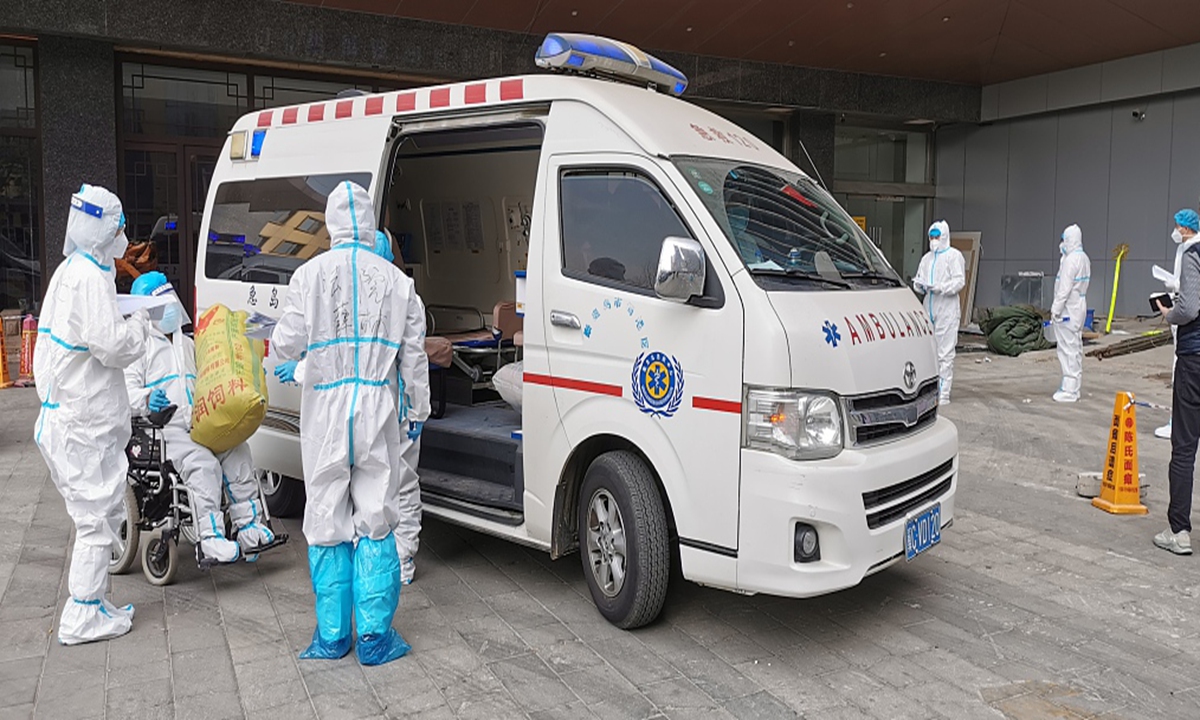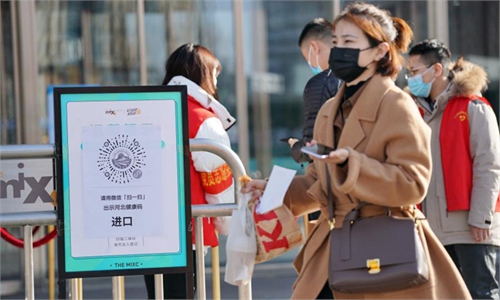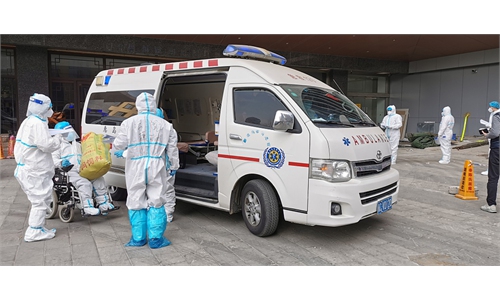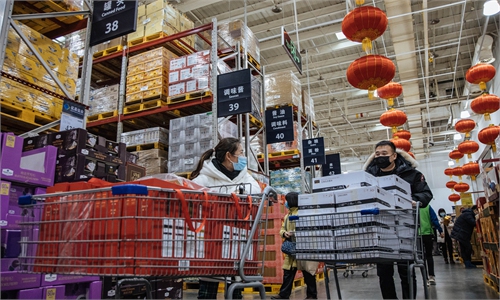
A villager from Gaocheng, a district in Shijiazhuang city which was hit hard during the latest round of COVID-19 resurgence, prepares to take an ambulance home after completing quarantine on February 7. Photo: VCG
A week ahead of the annual Spring Festival celebrations, China has seen its anti-epidemic efforts pay off, with the mega-cities of Beijing and Shanghai and most COVID-19 affected regions in the latest virus spike, reporting zero new local cases on Sunday. Only one domestic COVID-19 case was reported in Northeast China's Jilin Province.
Chinese medical experts said that this winter epidemic outbreak has been basically brought under control, which signals a phased victory.
They also cited a series of reasons to believe the country will continue to make such progress, including mass-scale vaccination, newly developed low-temperature disinfectant formulas for cold-chain products, and initiatives by local governments advising residents to spend the upcoming Spring Festival holidays in their working cities.
According to the National Health Commission, the Chinese mainland recorded only one domestic COVID-19 case in Jilin on Sunday, after a total of 2,071 local cases were reported in recent outbreaks across the country since January 2.
That one case has been put under quarantine after being classified earlier as an asymptomatic patient.
The downward trend of infections over the past week can be regarded as a sign of China's epidemic outbreak being "brought under control," Wang Peiyu, a deputy head of Peking University's School of Public Health, told the Global Times on Sunday, attributing the phased victory to anti-virus measures adopted in the nation's fight against the disease.
"For regions that are producing relatively precise and clear epidemiological surveys, some more accurate methods have been taken; while for other regions, mass screening was carried out to stop the virus from spreading silently among people. Either way, they have proven effective," said Wang.
Yang Zhanqiu, a deputy director of the pathogen biology department at Wuhan University, agreed, saying that a safe environment across the country has been ensured before the busiest gathering period of the Spring Festival.
Neither Beijing nor Shanghai, two mega-cities in China that are home to more than 42.6 million people in total, saw a rise in local infection numbers on Sunday.
Beijing has not seen a local infection case for eight consecutive days. Local authorities lifted lockdowns in several residential communities in the city's Daxing district where a few infections were previously detected. Shanghai also downgraded one of its medium-risk regions to low-risk in its Huangpu district.
Hebei Province, which was hit hard by flare-ups this winter, managed to resume business and normal daily life. It brought down daily increases to zero after experiencing a peak of infections from January 10 to 15, when an average daily increase of almost 80 cases took place. Of the total 1,280 confirmed patients, 1,117 have been cured and discharged from hospitals so far.
There remain 10 high-risk areas for contracting COVID-19 and 41 medium-risk areas nationwide. Replying to public concerns over when they will be cleared, Yang said as long as all confirmed patients and close contacts have been released from quarantine, and no new infections have been recorded, a region will be declared as a safe zone.
In addition to a positive view of the current epidemic situation, experts have expressed confidence in cementing such progress in the months ahead. The ongoing mass-scale vaccination drive, once completed nationwide, could effectively fend off the virus. Coupled with government initiatives advising local residents to stay put during the Spring Festival holidays, the measures will contain the disease, noted analysts.
A total of 19.28 million trips have been made on the national railways, highways, waterways and civil aviation routes so far in this holiday, a drop of 75.9 percent compared with the same period in 2019 and down by 76.3 percent compared with 2020, data released by the nation's travel authorities showed.
On top of the significant reduction in personnel flows, China's Center for Disease Control and Prevention announced on Sunday that it has developed two types of low-temperature disinfectant formulas, one effective at -18 C and above and the other effective at -40 C and above, which would offer low-cost but reliable solutions to the challenges involved in disinfection of packaging of cold-chain goods and of cold environments in the northern China.
However, Yang said that the disinfectant is only applicable to the packages but not the frozen food itself, and called on cold-chain management departments to monitor and examine the food more closely, especially during the upcoming holidays where families are more likely to consume such products.




